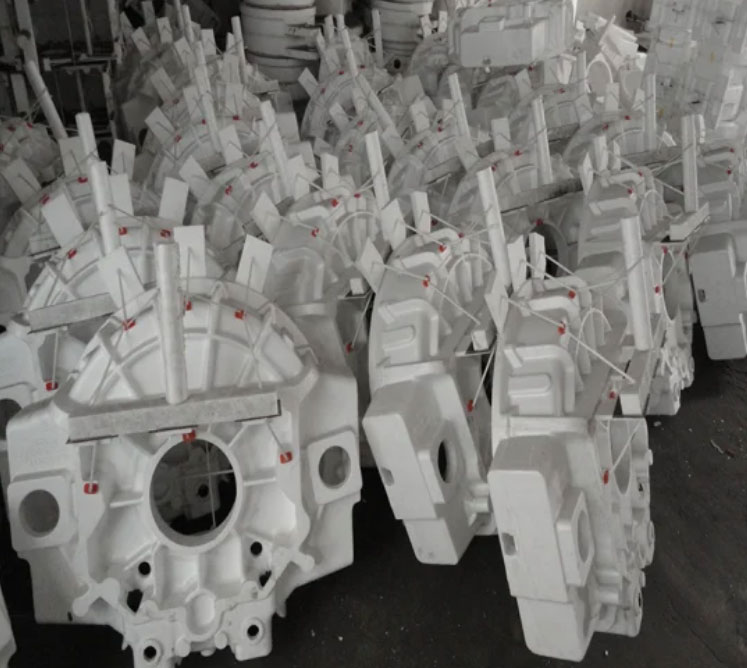In the production of rump pan assemblies for scraper conveyors, defects such as shrinkage porosity, misruns, and cold shuts frequently occur during lost foam casting. This study focuses on optimizing the casting process through numerical simulations to enhance product quality while reducing development cycles.

1. Structural Characteristics and Challenges
The rump pan (Fig. 1) features an E-shaped groove design with critical dimensions of 1,590 mm × 370 mm × 285 mm. Key challenges include:
- Wall thickness variations (25-60 mm)
- Thermal hotspots at M-groove intersections
- High straightness requirements for weld surfaces
| Parameter | Value |
|---|---|
| Liquidus Temperature | 1,512°C |
| Solidus Temperature | 1,470°C |
| Thermal Conductivity | 28 W/m·K |
| Specific Heat Capacity | 650 J/kg·K |
2. Initial Process Design
The original lost foam casting process employed a top-gating system with:
$$ Q = \frac{V}{t} = \frac{0.037}{30} = 0.00123 \, \text{m}^3/\text{s} $$
Where Q represents flow rate, V casting volume (0.037 m³), and t filling time (30s). Key parameters included:
| Component | Dimension |
|---|---|
| Pouring Cup | Ø100 mm |
| Sprue | Ø60 mm |
| Ingate | Ø50 mm |
3. Numerical Simulation Analysis
Using InteCAST software, we established critical boundary conditions:
$$ \frac{\partial T}{\partial t} = \alpha \nabla^2 T $$
Where α represents thermal diffusivity (4.2×10⁻⁶ m²/s). The simulation revealed:
| Location | Defect Severity |
|---|---|
| Shovel Base-Rib Junction | High (8.2% porosity) |
| M-Groove Connections | Medium (5.1% porosity) |
| Thrust Lugs | Low (2.4% porosity) |
4. Process Optimization Strategy
The optimized lost foam casting process implemented:
- 90° rotation of casting orientation
- Dual riser system with thermal regulation
- Modified gating ratio (ΣAsprue:ΣArunner:ΣAingate = 1:1.2:1.5)
$$ t_s = \frac{(T_p – T_m)^2}{\pi \alpha} = \frac{(1600 – 1470)^2}{\pi \times 4.2 \times 10^{-6}} \approx 2591 \, \text{s} $$
| Parameter | Initial | Optimized |
|---|---|---|
| Filling Time (s) | 30 | 28 |
| Riser Volume (%) | 18 | 22 |
| Solidification Time (s) | 2,545 | 2,591 |
5. Production Verification
The optimized lost foam casting process demonstrated:
- 95% reduction in shrinkage defects
- 0.12 mm improved dimensional accuracy
- 18% increase in yield strength
$$ \eta = \frac{V_r – V_s}{V_r} \times 100\% = \frac{0.022 – 0.003}{0.022} \times 100\% = 86.4\% $$
Where η represents riser efficiency, Vr riser volume, and Vs shrinkage volume.
6. Conclusion
This study confirms that through systematic simulation and optimization of lost foam casting parameters, critical components like rump pans can achieve:
- Effective elimination of shrinkage defects
- Improved mechanical properties
- Enhanced production efficiency
The methodology provides valuable insights for complex steel castings production using lost foam casting technology, particularly for mining equipment components requiring high structural integrity.
